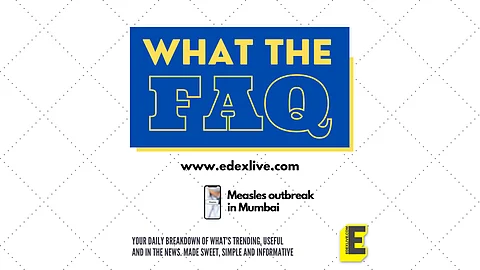

The Brihanmumbai Municipal Corporation (BMC), civic authority of Mumbai, has confirmed the outbreak of measles in slum areas of the city — in the Govandi locality, after four children aged between one to five years reportedly died due to the contagious disease within a span of 48 hours, according to reports. Following the reports of the outbreak, the Union Health Ministry has appointed a high-level multi-disciplinary team in the city to track the surge of cases.
What are the symptoms of the disease? How many people have been vaccinated against the disease? Today’s FAQ will answer these questions
What are measles and who does it mainly target?
Measles is a highly contagious, serious disease caused by a virus. Before the introduction of the measles vaccine in 1963 and widespread vaccination, major epidemics occurred approximately every two to three years. It caused an estimated 2.6 million deaths each year, as per a report by the World Health Organization (WHO). The virus mainly infects children's respiratory tract and then spreads throughout the body.
The first indication of measles is usually a high fever, which begins about 10 to 12 days after exposure to the virus and lasts for four to seven days. A runny nose, cough, red and watery eyes, and small white spots inside the cheeks are some of the other symptoms. After several days, a persistent rash erupts which spreads across the body. In fact, India stood fourth among 194 countries in the number of cases of measles recorded between July 2018 and June 2019, according to the measles surveillance data released by the WHO.
What is the vaccination status in the country?
India has adopted the National Strategic Plan for Achieving and Sustaining Measles and Rubella Elimination in India and has vaccinated over 324 million children between 2017 and 2020 through the vaccination campaign, as per a report by WHO. However, according to a National Statistical Office (NSO) Report for 2017-18 showed that the coverage for measles vaccine fell to 64 per cent — recording the poorest coverage for one of the main vaccines a child gets for being fully immunised. Moreover, the COVID-19-induced restrictions led to a drop in vaccine coverage to 88 per cent in 2020 from 100 per cent in 2018, according to reports. In fact, reports pointed out that measles cases more than doubled in the first two months of 2022 compared to the previous year in India — a trend which was observed globally too.
Why did children miss out on vaccinations?
WHO reported that in 2020, 23 million children missed out on basic childhood vaccines through routine health services, the highest number clocked since 2009 and 3.7 million more than in 2019. As of April 1, 2022, 57 vaccine-preventable disease campaigns in 43 countries that were scheduled to take place since the start of the COVID-19 pandemic still stand postponed due to the restrictions.
Of these, 19 are measles campaigns, which put 73 million children at risk of measles due to missed vaccinations. In Ukraine, the measles catch-up campaign of 2019 was interrupted due to the COVID-19 pandemic and thereafter, due to the Russia-Ukraine war, as per WHO.
What is the national goal to eliminate measles?
Member countries of the WHO South-East Asia Region resolved to eliminate measles and rubella by the year 2023, to prevent further deaths and disabilities caused by these highly infectious diseases, as per WHO. India had earlier committed to eliminating the disease by 2020. The member countries adopted a “Strategic Plan for Measles and Rubella Elimination 2020-2024” for the same. So far, five countries have eliminated measles — Bhutan, DPR Korea, Maldives, Sri Lanka and Timor-Leste, as per WHO.
